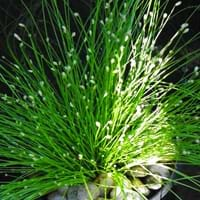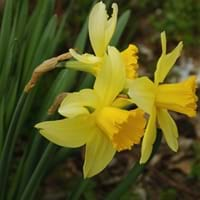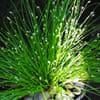Life Span
Annual
Perennial
Origin
Southern Europe, United Kingdom, Northern Africa
Asia, Central Asia, Eastern Asia, Southwest Europe
Types
Not Available
Accent, Acropolls, Cassata,Dellbes, Flower parade, Hawera
Number of Varieties
Not Available
Habitat
Grassland, Humid climates, Riverbanks, Wet forest
Hillside, Open scrub, River side, Rocky areas, Scrubs, Woods
USDA Hardiness Zone
8-11
3-9
Sunset Zone
7, 8, 9, 10, 11, 12, 13, 14, 15, 16, 17, 18, 19, 20, 21, 22, 23, 24
A2, A3, 1a, 1b, 2a, 2b, 3a, 3b, 4, 5, 6, 7, 8, 9, 10, 11, 12, 13, 14, 15, 16, 17, 18, 19, 20, 21, 22, 23, 24
Habit
Arching/Fountain-shaped
Clump-Forming
Flower Color
White
Ivory, Lemon yellow, Peach, White, Yellow, Yellow green
Flower Color Modifier
Bicolor
Bicolor
Fruit Color
Non Fruiting Plant
Not Available
Leaf Color in Spring
Green
Green
Leaf Color in Summer
Green
Green
Leaf Color in Fall
Green
Green
Leaf Color in Winter
Green
Green
Plant Season
Spring, Summer, Fall, Winter
All year
Sunlight
Full Sun, Partial Sun, Partial shade
Part sun
Type of Soil
Loam
Clay, Loamy, Sandy
The pH of Soil
Neutral
Acidic
Soil Drainage
Poorly Drained
Well drained
Bloom Time
Indeterminate
Early Spring, Late Spring, Spring
Tolerances
Drought
Black Walnut Toxicity
Where to Plant?
Container, Ground, Pot
Ground
How to Plant?
Seedlings, Stem Planting
From bulbs
Plant Maintenance
Medium
Medium
Watering Requirements
Keep the ground moist but not water-logged, Requires regular watering, Water when soil is dry
It cannot sustain wet-feet, Keep the ground moist but not water-logged, Water Deeply, Water when soil is dry
In Summer
Lots of watering
Lots of watering
In Spring
Moderate
Moderate
In Winter
Average Water
Average Water
Soil Type
Loam
Clay, Loamy, Sandy
Soil Drainage Capacity
Poorly Drained
Well drained
Sun Exposure
Full Sun, Partial Sun, Partial shade
Part sun
Pruning
Remove damaged leaves, Remove dead branches, Remove dead leaves
Cut or pinch the stems, Prune to control growth, Remove dead leaves, Remove dead or diseased plant parts
Fertilizers
All-Purpose Liquid Fertilizer
All-Purpose Liquid Fertilizer
Pests and Diseases
Red blotch
Basal rot, Crown rot, Fire, Leaf spot, Scorch, Viruses
Plant Tolerance
Drought
Drought
Flower Petal Number
Single
Single, Double
Foliage Texture
Fine
Medium
Foliage Sheen
Glossy
Matte
Attracts
Insects
Not Available
Allergy
Asthma, Skin irritation
Asthma, Rhinoconjunctivitis
Aesthetic Uses
Beautification
Showy Purposes
Beauty Benefits
Not Available
Not Available
Environmental Uses
Air purification
Air purification
Medicinal Uses
Digestion problems, Fever
Asthma, Cold, Cough, Vomiting
Part of Plant Used
Whole plant
Flowers, Leaves
Other Uses
Showy Purposes, Used as Ornamental plant
Showy Purposes
Used As Indoor Plant
Yes
No
Used As Outdoor Plant
Yes
Yes
Garden Design
Bog Garden, Container, Edging, Rock Garden / Wall
Not Available
Botanical Name
ISOLEPIS cernua
Narcissus
Common Name
Low Bulrush
Slender Clubrush
Daffodil
In Hindi
फाइबर ऑप्टिक घास
हलका पीला
In German
Lichtwellenleiter-Gras
Narzisse
In French
Fibre optique Herbe
Jonquille
In Spanish
Hierba de fibra óptica
Narciso
In Greek
Οπτικών Ινών Grass
ασφόδελος
In Portuguese
Fibra Óptica Relva
Abrótea
In Polish
Światłowody Trawa
żonkil
In Latin
Fiber opticus Grass
Asphodelus
Phylum
Not Available
Magnoliophyta
Class
Not Available
Liliopsida
Family
Cyperaceae
Amaryllidaceae
Clade
Angiosperms, Commelinids, Monocots
Angiosperms, Monocots
Tribe
Not Available
Narcisseae
Subfamily
Pooideae
Amaryllidoideae
Season and Care of Fiber Optic Grass and Daffodil
Season and care of Fiber Optic Grass and Daffodil is important to know. While considering everything about Fiber Optic Grass and Daffodil Care, growing season is an essential factor. Fiber Optic Grass season is Spring, Summer, Fall and Winter and Daffodil season is Spring, Summer, Fall and Winter. The type of soil for Fiber Optic Grass is Loam and for Daffodil is Clay, Loamy, Sandy while the PH of soil for Fiber Optic Grass is Neutral and for Daffodil is Acidic.
Fiber Optic Grass and Daffodil Physical Information
Fiber Optic Grass and Daffodil physical information is very important for comparison. Fiber Optic Grass height is 15.20 cm and width 45.70 cm whereas Daffodil height is 1.25 cm and width 1.25 cm. The color specification of Fiber Optic Grass and Daffodil are as follows:
Fiber Optic Grass flower color: White
Fiber Optic Grass leaf color: Green
Daffodil flower color: Ivory, Lemon yellow, Peach, White, Yellow and Yellow green
- Daffodil leaf color: Green
Care of Fiber Optic Grass and Daffodil
Care of Fiber Optic Grass and Daffodil include pruning, fertilizers, watering etc. Fiber Optic Grass pruning is done Remove damaged leaves, Remove dead branches and Remove dead leaves and Daffodil pruning is done Cut or pinch the stems, Prune to control growth, Remove dead leaves and Remove dead or diseased plant parts. In summer Fiber Optic Grass needs Lots of watering and in winter, it needs Average Water. Whereas, in summer Daffodil needs Lots of watering and in winter, it needs Average Water.





